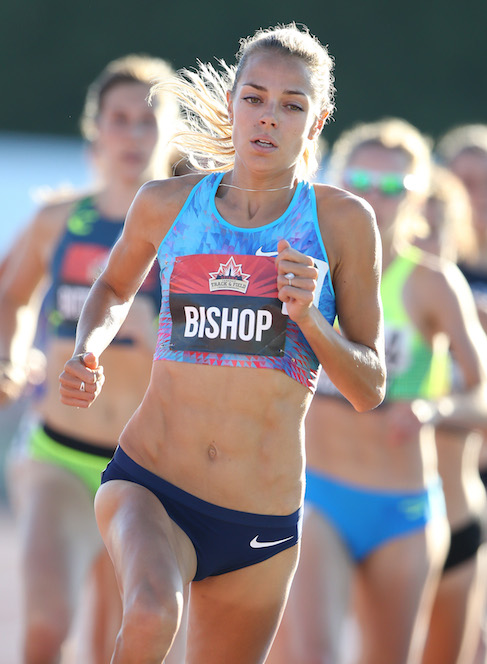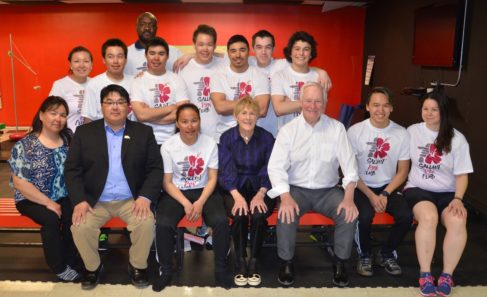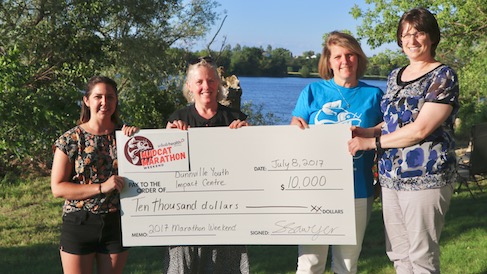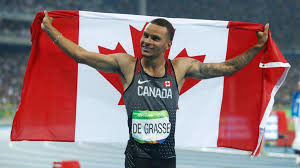Some of the world’s most popular track athletes are Canadians. But is that enough to encourage our kids to run and bolster attendance at this country’s largest events? Sean Tierney talks to the stars and looks at the numbers.
“It’s an extra adrenaline boost.”
Melissa Bishop, racing close to her hometown of Eganville, Ont., exhaled these words to reporters moments after winning her 800m women’s semifinal at the Canadian Track and Field Championships in Ottawa, Ont.
“A lot of fans in the stands right now and a lot of close supporters that have been with me on this journey for a long time. They finally get to see me race at home and that’s really special.”
It was an intriguing message. Despite having her sights set on the IAAF World Championships in London, Bishop’s words were grounded and familiar. In fact, the two-time Olympian sounded just like the average weekend warrior, thanking her family and friends for waiting at the finish line to show their support.
Bishop’s no starry-eyed newcomer. She has performed on the biggest international stages—at the London Summer Olympics in 2012 and in Brazil at the 2016 Summer Olympics in Rio de Janeiro. Still, the soon-to-be 29-year-old posted a time of 2:00:26, three seconds ahead of second place, and didn’t sound much different than an average Sunday runner competing in a local 5K after her win:
“I’m going to go home tonight, get something to eat…Try to get a few hours of sleep.”

Bishop’s appreciative comments about the overwhelming crowd support underlined the strong relationship shared between runners with their family, friends and fans.
Andre De Grasse, Canada’s most recognizable track star today, competed in the 100m and 200m runs in Ottawa. Despite rainy conditions on the evening of the 100m final, the stands at the Terry Fox Athletic Facility came to life when De Grasse emerged from the starting blocks area, waving and clapping as he was introduced pre-race.
In the 100m final, De Grasse posted a 10.11 second finish, just ahead of second place finisher Brendon Rodney (10.18 seconds) and veteran, fan-favourite Gavin Smellie (10.23 seconds). De Grasse, already the 200m Canadian record holder, followed this up with a smooth victory in the 200m race, posting a strong time of 19.96 seconds.
Still, the 22-year-old Scarborough, Ont., native was clearly disappointed. De Grasse said that he didn’t he didn’t “give the fans what that came to see.” That is, of course, a sub-10 second time. That kind of finish would have boded well for De Grasse for the 2020 Olympics in Tokyo.
But preparation for international competition wasn’t the sticking point for De Grasse. Instead, it was the disappointment that he hadn’t given the Ottawa crowds the show they wanted. The show they deserved.
De Grasse humbly thanked fans and generously gave his time to reporters after competing. He patiently answered questions long after his race finished, while his teammates jokingly hollered, “Come on, Dre!” from the sidelines, beckoning De Grasse to the podium.
Canada’s young star finished his fan love-in by signing hundreds, maybe thousands, of autographs. He seemed genuinely surprised that so many fans were interested in connecting with him. Nonetheless, De Grasse was cognizant of his connection with his fans and was a bit distraught about his time when talking with reporters after winning the 100m final.
“I’m really grateful to be healthy, happy to get the win…I felt like I was ready to run a fast time. I’m a little disappointed I couldn’t give the fans what they wanted.”
John Halvorsen is the current president and race director of Run Ottawa and a former Olympian, competing for Norway in the ’88 and ’92 Summer Olympics. Halvorsen’s perspective on the relationship between athlete, local runner and fan is unique, coming from his background as an elite athlete now charged with promoting the sport of running in a local way.
“Clearly, we’re lucky to have Andre and Melissa as world-class stars,” he says. “The athletes understand that we’re in a sport that’s struggling to gain media attention in North America. They totally appreciate when a big crowd comes out.”
Halvorsen nails it: competing with the major sports in North America has proven challenging for track and field as an attractive athletics option. Studies show that the participation rate among youth (ages 6-17) in track and field dropped almost 11 percent in 2016, part of a nationwide trend in the U.S.
A similar trend is sweeping Canada, where researchers have noted falling participation rates across sports. Since 1992, there has been a 17% drop in sports participation rate among those age 15 and older. The Community Foundations of Canada issued its Vital Signs Sport & Belonging report in 2010, which noted that three out of four youth aged 5-17 are active in some sport but “participation rates peak at age 10 to 13 and then decline steadily and dramatically with age.”
So, what’s the connection with Canada’s running stars?
“When athletes cater to the spectators, it brings everything together,” Halvorson says.
For Canadian stars like De Grasse and Bishop, who acknowledge the role of their family, friends, and fans, it’s a chance to help rekindle a love of sport in the spectators.
“It’s tough to defeat the fish that are from other ponds,” Halverson says. “It’s important for stars [like De Grasse and Bishop] to run at home. It motivates local runners to be on the same track and to be around the stars. The stars are just regular people too. But they’re heroes in their communities. This all feeds off of one another.”
While the likes of De Grasse and Bishop only race on the same track as Canada’s upper crust of runners, long-distance road races in the country do continue to draw higher-profile personalities looking for opportunities to run. Eric Gillis, Rachel Cliff, Lanni Marchant and Krista DuChene are only some of the marathon stars who participate on our biggest road racing events. Still, star power can only drive this sport so far.
Accessibility to big name runners—whether as a fan in the stands or a competitor toeing the starting line of a road race—is important for growing the running profile in Canada.
But there are issues that even Canada’s best athletes can’t do much to counter with autographs, shout-outs to fans or endless interviews. Halverson noted that Canada’s widely dispersed population and a proliferation of small running events in local areas keeps amateur runners from attending marquee events with larger crowds. Access to equipment needed to host a race—online registrations, electronic race timers and prizes—have lowered the bar for entry of race organizers. On one hand, serving local communities with nearby races can help foster grassroots growth in race sports. But on the other hand, a proliferation of smaller events prevents opportunities for large groups in major city centres from coming together en masse, drawing in major stars, sponsorship and interest.
It’s a tough balancing act.
These are problems that, for now, aren’t going away. And, perhaps one day, Bishop or De Grasse may follow in Halverson’s footsteps and take on a leadership role with a running organization or doing other work to promote the sport.
For now, these two and the rest of the Canadian contingent are focused on their preparatory work in advance of the 2020 games. Tune in to follow their results—you may just find yourself inspired to run.
















 Our Magazine
Our Magazine Previous Release
Previous Release
